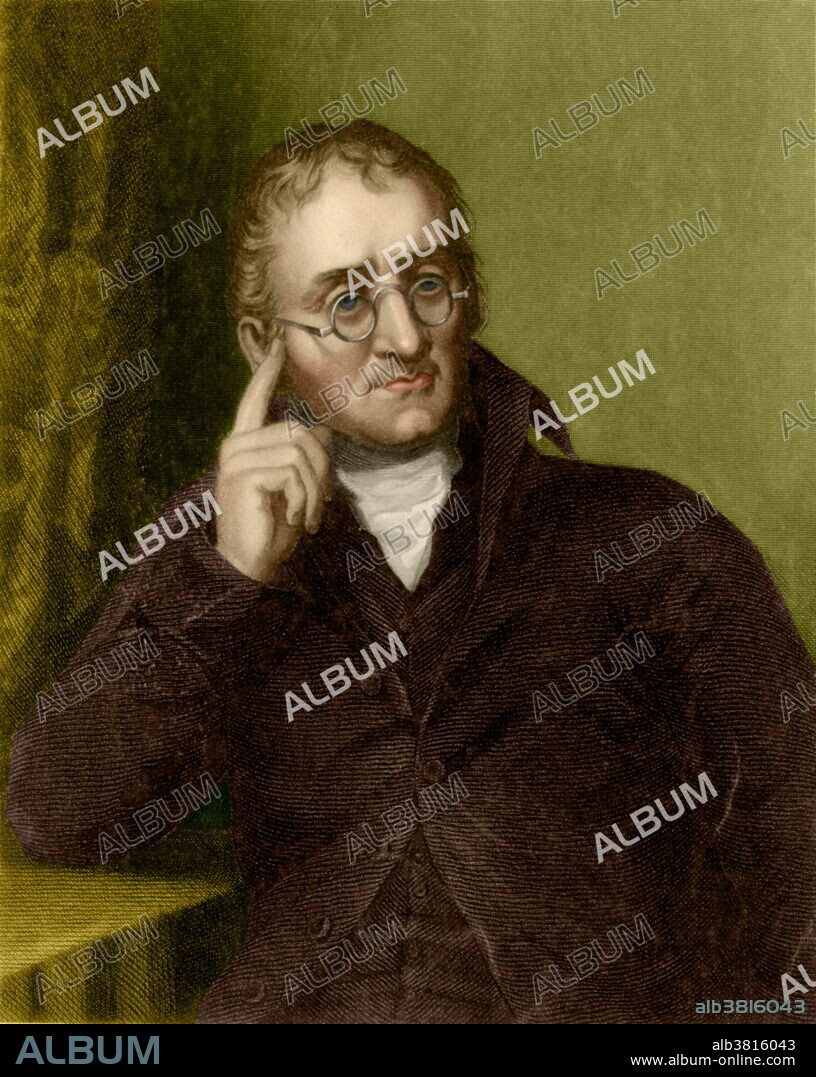alb3816043
John Dalton, English Chemist

|
Añadir a otro lightbox |
|
Añadir a otro lightbox |



¿Ya tienes cuenta? Iniciar sesión
¿No tienes cuenta? Regístrate
Compra esta imagen

Título:
John Dalton, English Chemist
Descripción:
Traducción automática: John Dalton (6 de septiembre de 1766 - 27 de julio de 1844) fue un químico, meteorólogo y físico inglés. Aunque es mejor conocido por su trabajo pionero en el desarrollo de la teoría atómica moderna, comenzó un diario meteorológico en 1787 en el que anotó más de 200.000 observaciones. A principios de 1800 comenzó el trabajo de su vida que culminó en su teoría atómica que consta de cinco puntos principales; 1) los elementos están hechos de partículas extremadamente pequeñas llamadas átomos, 2) los átomos de un elemento dado son idénticos en tamaño, masa y otras propiedades, por lo que los átomos de diferentes elementos difieren en tamaño, masa y otras propiedades, 3) los átomos no pueden ser subdivididos, creados o destruidos, 4) átomos de diferentes elementos se combinan en proporciones simples de números enteros para formar compuestos químicos, y 5) en reacciones químicas, los átomos se combinan, separan o reorganizan. Dalton usó sus propios símbolos para representar visualmente la estructura atómica de los compuestos. Muchos de los primeros compuestos enumerados en el Nuevo Sistema de Filosofía Química corresponden a puntos de vista modernos, aunque muchos otros no. Murió en 1844 a la edad de 77 años.
John Dalton (September 6, 1766 - July 27, 1844) was an English chemist, meteorologist and physicist. Though he is best known for his pioneering work in the development of modern atomic theory he began a meteorological diary in 1787 in which he entered more than 200,000 observations. In the early 1800's he began his life's work culminating in his atomic theory that consists of five main points; 1) elements are made of extremely small particles called atoms, 2) atoms of a given element are identical in size, mass, and other properties, thus atoms of different elements differ in size, mass, and other properties, 3) atoms cannot be subdivided, created, or destroyed, 4) atoms of different elements combine in simple whole-number ratios to form chemical compounds, and 5) in chemical reactions, atoms are combined, separated, or rearranged. Dalton used his own symbols to visually represent the atomic structure of compounds. Many of the first compounds listed in the New System of Chemical Philosophy correspond to modern views, although many others do not. He died in 1844 at the age of 77.
Crédito:
Album / Science Source
Autorizaciones:
Modelo: No - Propiedad: No
¿Preguntas relacionadas con los derechos?
¿Preguntas relacionadas con los derechos?
Tamaño imagen:
2945 x 3696 px | 31.1 MB
Tamaño impresión:
24.9 x 31.3 cm | 9.8 x 12.3 in (300 dpi)
Palabras clave:
1808 • 1844 • ARTE • CEGUERA DE LOS COLORES • CIENCIA • CIENTIFICO • COLOREADA • DIBUJO • EUROPEO • FAMOSO • FIGURA • FÍSICA (CIENCIA) • FÍSICO (CIENTIFICO) • GENTE • GRABADO • HISTORIA • HISTORICO • HOMBRE • HOMBRES • ILUSTRACION • IMPORTANTE • INGLES • MASCULINO • MAYOR • METEOROLOGÍA • METEOROLOGO • METEREOLOGIA • METEREOLÓGICOS • OBRA DE ARTE • PERSONA • PERSONALIDAD • PERSONALIDADES • QUIMICA • QUIMICO • RETRATO DE HOMBRE • SIGLO XIX • SIGLO XVIII
 Pinterest
Pinterest Twitter
Twitter Facebook
Facebook Copiar enlace
Copiar enlace Email
Email
